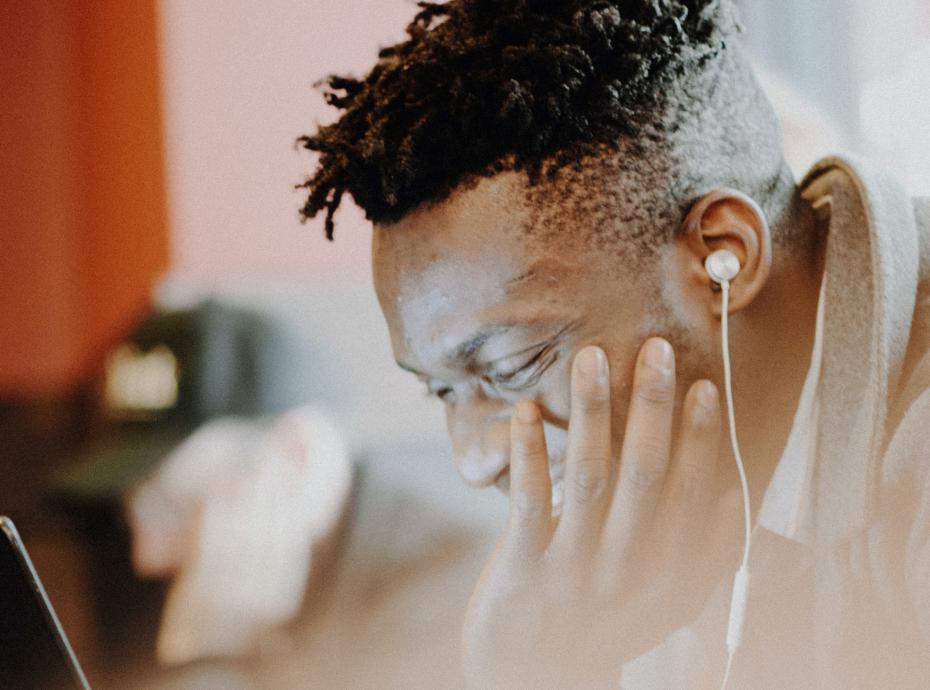I had a colleague who couldn’t stop talking about “girls in bed” as a serious problem in his online classes. It was disruptive, distracting and disrespectful, in his opinion.
Ick, I thought, but didn’t say anything. Why not say “students in bed” rather than “girls in bed”? Was the issue that these young women were promoting laziness by not sitting upright on furniture with hard surfaces? Or were they somehow temptresses, likely to lead men astray with the seductive powers of their female sexuality?
In either case, it didn’t seem fair. So many students were trying to learn in the only space with any quiet or privacy in their households. Often this might be a bedroom lacking the luxury of a desk.
Another instructor’s pet peeve was students in cars: “It’s like they were out grocery shopping and decided to squeeze in class as an afterthought.”
Of course, some students live in places without broadband service or a robust wireless signal. They might have to drive to somewhere with connectivity to participate in class.
These situations of questionable decorum remind us that the camera does more than merely take attendance. It is also clear that self-presentation matters in an academic situation. But are instructors responsible for teaching about online performance and media literacy in the era of Zoom? Yes, but not to police their students’ behaviour.
In Seeing Ourselves Through Technology, Jill Walker Rettberg points out that technologies of self-consciousness have a long history − one that dates back to the mirror.
According to Rettberg, gazing at one’s reflection in the looking glass – or watching oneself in a video frame – produces an encounter with one’s “data double”. These alter egos might not align with a person’s self-image, but examining pictures of ourselves can offer opportunities to experiment with other kinds of identity performance. For example, testing out my camera feed before class might encourage me to adopt a more formal persona – or a more casual one.
In a traditional classroom, teachers and students didn’t have to see themselves while learning was taking place. That power of invisibility could be liberating, allowing everyone to focus on the subject matter. Now, people are learning in environments more akin to ballet studios, in which everyone can see themselves. The issue of appearance is almost impossible to avoid.
Holding up mirrors to ourselves can be uncomfortable. And with teleconferencing technologies such as Zoom, the ugly behaviour of teachers might also be on display. For example, a video went viral recently that showed an instructor berating a disabled student. In this case, having the camera on made visible the abuse of authority, just as it might reveal a lack of deference from students joining class from beds or cars.
To imagine alternatives to the surveillance paradigm, educators should pay attention to why young people are using platforms that allow social interaction without visual scrutiny. For example, Discord is a popular app among gamers, with channels for talk and text. Discord’s audio-only features allow users to enjoy the ambience of being in the presence of others without the anxiety of facing on-screen judgment. Teachers might not have visited it yet, but a different kind of virtual campus already exists for thousands of students in study groups and school clubs organised on Discord.
Increasingly, these audio and text services are being used for academic events, book talks and professional networking. I’ve hung out with dozens of fellow college professors at the Discord server for the Electronic Literature Organisation. Students in my electronic literature class have formed their own Discord to share tips and encouragement as they work independently on their digital projects. There are also ways to combine audio or text interactions with critical viewing activities. For example, students can watch assigned movies together on their individual computers while sharing comments on a Discord channel.
At the other extreme, there are apps that emphasise hypervisibility and drawing as much attention to oneself as possible. During lockdown, TikTok became particularly popular as a way to put on a one-woman or one-man show. Users create very short movies, usually starring themselves. They might draw upon the app’s enormous library of audio and video clips, digital effects or editing features to create truly spectacular content. Or they might opt for a more direct approach with a monologue or “storytime” delivered straight to the camera.
There are lots of science, health, history, art and music educators on TikTok, so it obviously has huge potential for teaching and learning. However, there are also serious drawbacks, because TikTok harvests data to personalise content. Giving up the security and privacy of the classroom to benefit a commercial service might not make sense. However, producing short-form videos in a TikTok-like format could provide a break from gruelling synchronous sessions of screen time.
In addition to respite from “Zoom fatigue”, making such videos offers a way to talk about the academic identities that we want to project and how trust in our expertise often relies on observing certain norms of social performance. This approach offers a way to talk about appearances without stigmatising students − and the students coming to class from their beds or their cars might welcome the opportunity to showcase their creativity and knowledge.
Elizabeth Losh is the Gale and Steve Kohlhagen distinguished professor of American studies and English, with a focus on new media ecologies, at William & Mary college in Virginia. She is the author of five books about digital culture, including The War on Learning: Gaining Ground in the Digital University.



comment